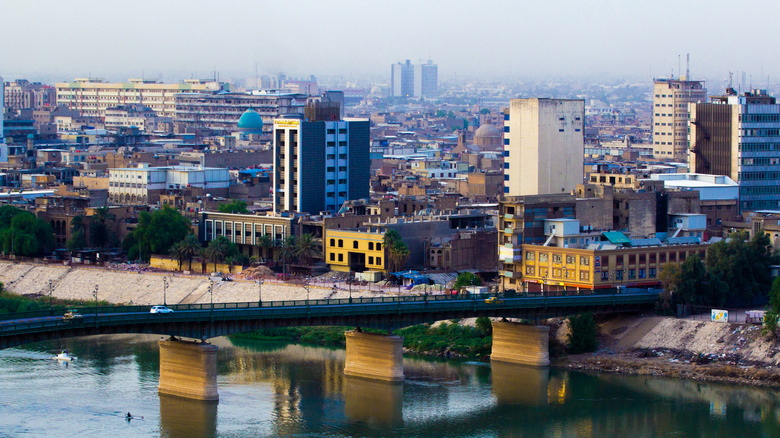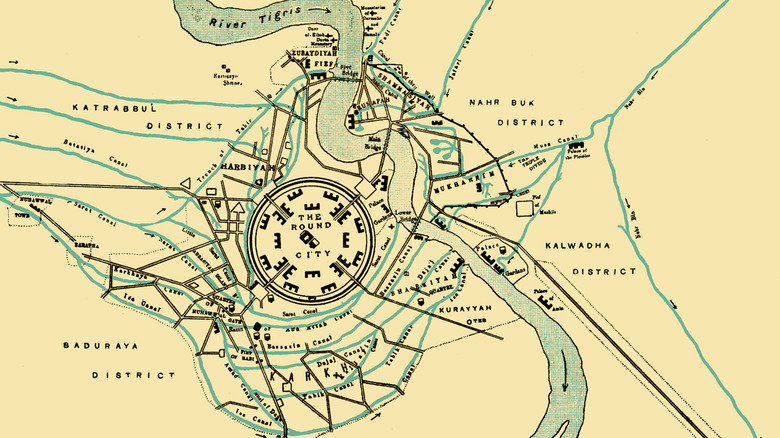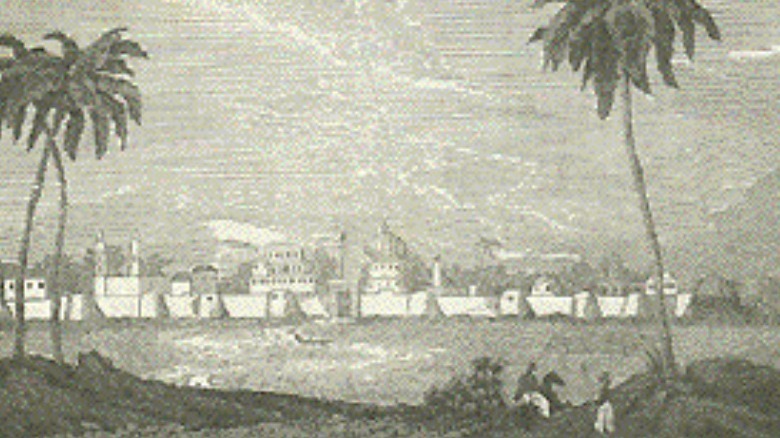How The Original City Of Baghdad Was Built In A Perfect Circle
Today, Baghdad is the capital of the country of Iraq, and is one of the largest cities in the middle east. As Britannica explains, Baghdad has been involved in some serious conflicts, such as both the Iraq War and Persian Gulf War. Both wars saw immense damage done to Baghdad's infrastructure. Despite its notorious difficulties for getting into the country, Baghdad has mostly maintained itself as a popular vacation destination, given its breathtaking sites of intrigue and local culture (via CNN).
But what was Baghdad like before the age of modernity? Abbasid caliph al-Mansur established Baghdad the city in A.D. 762. As The Guardian explains, Baghdad is a relative newcomer on the scene of ancient cities; Babylon alone dates back to the third millennium B.C., let alone Ur and Nineveh (fourth and seventh millennia B.C., respectively). Antiquity aside, Baghdad was one of the most magnificent cities on the planet, once the height of culture in the world, in contrast to what it may be today. The distance between Baghdad of the past and Baghdad of the future is murky and complicated. But how did Baghdad get its original circular city design? For that, one must know a little about its founder, Abbasid caliph al-Mansur — "The Victorious," a man who admired Euclidian mathematics, who wanted his own empire to have its own, new city: Baghdad. But it would take much more than wishful thinking to bring about the dream.
Baghdad's design was meant to evoke Euclidean geometry
Baghdad was created over 1,250 years ago, but before that, Mansur had to choose its location and, most importantly, its design. Despite the city's turbulent history with warfare and statecraft, it managed to have some of the best urban design in the entire world. As The Guardian explains, the city of Baghdad had some particularly advanced construction for its time. This is all due to how its planners took advantage of mathematics and building materials.
Baghdad's own infrastructure was one of the largest devised during its time, with tightly intricate planning that made the city flush with clever construction and beautiful architecture. Mansur was a huge fan of mathematician Euclid, which influenced the circular design the city eventually took. As Britannica says, Euclid was a Greek mathematician from 300 B.C., who laid much of the groundwork for geometry as a formal study. Mansur wanted his city to be a perfect circle, as tribute to the mathematician himself. This design would prove arduous and time consuming, however, requiring some advanced thinking and engineering ingenuity. As for the location, the ancient accounts tell us that monks were the ones who tipped Mansur to the site's favorable climate, as well as the advantages of its geography. According to The Guardian, Mansur chose a location with favorable climate, but also with natural water sources for his future city's design. This would in turn help put Baghdad on the spot for advanced city development.
The round city was one of the most ambitious and labor-intensive projects in history
Baghdad's central location, resting on the Tigris River, was also prime for trading, which helped propel it to the status of the Islamic capital of the world, as The Guardian relates. Besides providing water for agriculture, the Tigris River, together with the Euphrates (per National Geographic), was then a major conduit of transportation of goods and trade, the second-largest river in western Asia. Construction of Baghdad, the city that would become the highlight of Middle Eastern culture, required equally large resources and labor.
There were thousands of laborers, ranging from architects to blacksmiths and legal experts, all of whom contributed greatly to the city's construction, as The Guardian notes. Kiln-fired bricks, along with other sturdy building material, helped make Baghdad a fortified fortress against incoming threats. The inner city had stretches of gates, bridges, and miles of metropolis and merchant shops (via Britannica). The circular enclosure, measuring four miles in circumference, was at the heart of the city, and contained many of its royal precincts and palaces, along with aristocratic districts. The outer wall measured 80 feet high, itself surrounded by a moat. Hundreds of thousands of bricks were required for the city's walls.
It's clear that Baghdad had more than enough beauty to justify its place as the jewel of the Islamic world. Given the unique, circular design of the city, it's easy to see why many looked upon it with wonder. While the Baghdad of the old may not be here today, its architectural legacy will live on.


